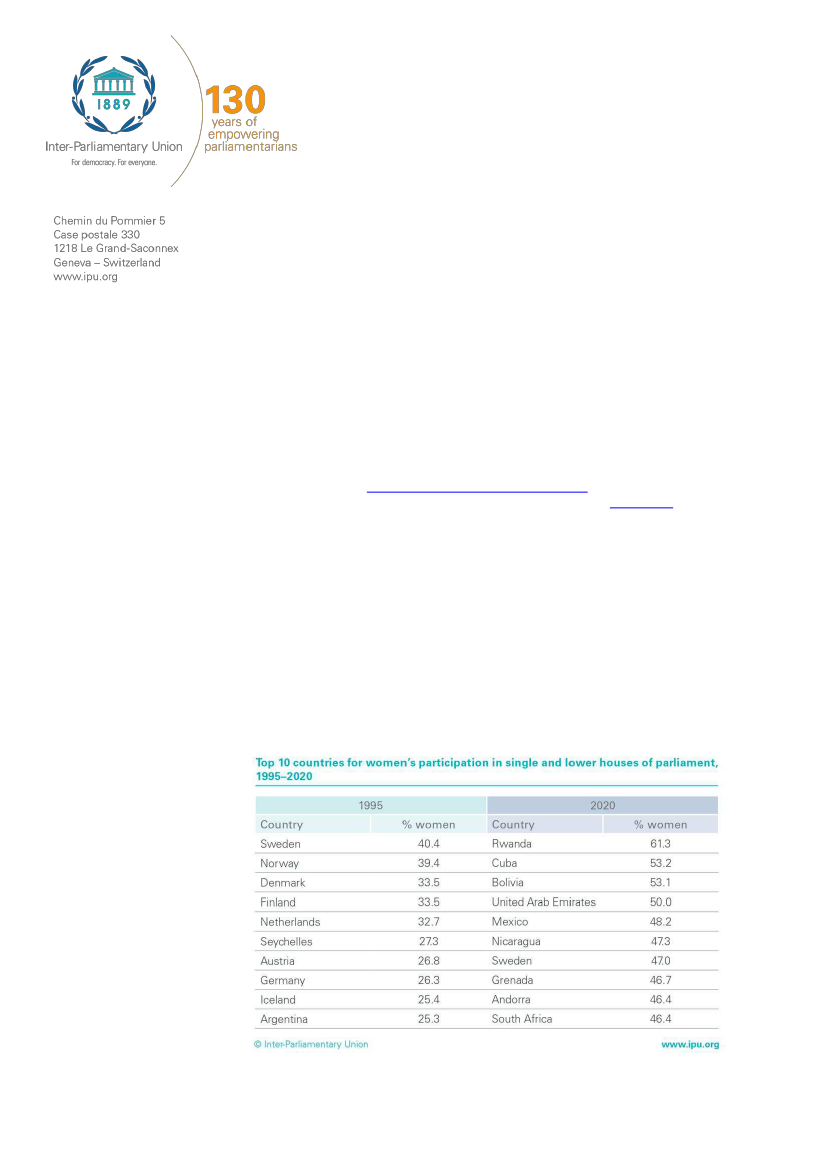
Press Release
25 years after Beijing, IPU analysis shows that gender
parity is possible
Geneva, Switzerland, 6 March 2020, for immediate release.
A quarter of a century after the United Nations Fourth World Conference on Women in
Beijing, the overall percentage of women in parliaments has reached 24.9 per cent in
2020, up from 11.3 per cent in 1995. In four countries (Rwanda, Cuba, Bolivia and the
United Arab Emirates) women now account for 50 per cent or more MPs in their lower
or single chambers compared with 1995 when no parliament had reached gender
parity. Gender quotas remain critical success factors for women to be better
represented in parliament, especially young women.
The IPU has tracked
women’s participation in parliament
for decades, allowing it to
monitor historical trends, progress and setbacks. This
year’s
IPU report
looks back at
25 years of women in parliament on the occasion of the 25th anniversary of the Beijing
conference and its groundbreaking action plan for gender equality.
More than 25 years to reach 25 per cent
The last 25 years have seen a significant increase in the proportion of women in
parliaments around the world, with the share of women in national parliaments
reaching almost 25 per cent globally. Rwanda, the United Arab Emirates and Andorra
have made the greatest progress with +57, +50 and +42.8 percentage points gained
respectively in their lower or single chambers between 1995 and 2020.
Twenty-five years ago, eight out of the top ten parliaments with the highest
representation of women were European, mostly in the Nordic countries. Today, the
ranking has changed considerably, with more regions represented.